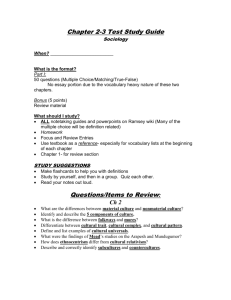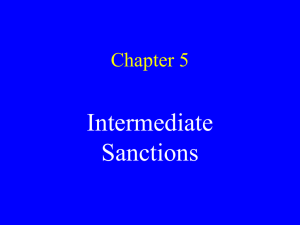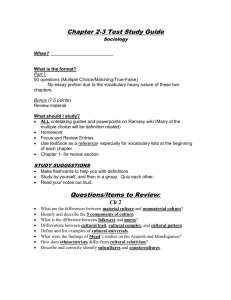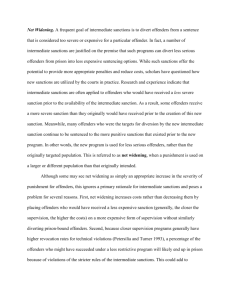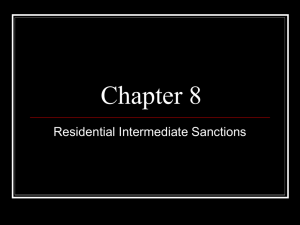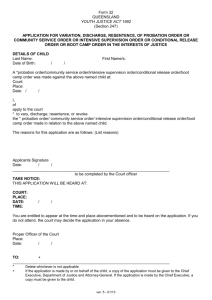Chapter 8
advertisement
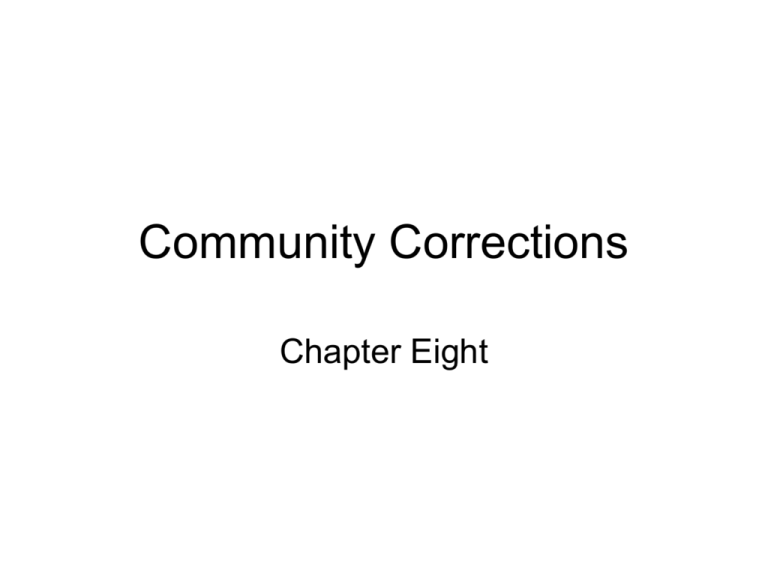
Community Corrections Chapter Eight Community Corrections • Comprehensive community supervision comprises a multitude of human resources, programs, automation and communication systems, and specialized supervision approaches. Diversion • Designed to funnel offenders away from the criminal justice system and into community programs Diversion (continued) • Commonly referred to as the “front door” program What Are Intermediate Sanctions? • Range of sanctions between prison and traditional probation Types of Intermediate Sanctions • Vary from state to state • Most common forms: Types of Intermediate Sanctions (continued) • Other forms: Types of Intermediate Sanctions (continued) • Intensive supervision probation (ISP) Types of Intermediate Sanctions (continued) • House arrest (AKA home confinement) Types of Intermediate Sanctions (continued) • Electronic monitoring Types of Intermediate Sanctions (continued) • Fines Types of Intermediate Sanctions (continued) • Restitution Types of Intermediate Sanctions (continued) • Community service Types of Intermediate Sanctions (continued) • Boot camps Shock Incarceration • Created in 1983, shock incarceration/probation programs are also known as “boot camps.” Shock Incarceration (continued) • In 1984, there were only 2 states, Georgia and Oklahoma, who had boot camp programs. Characteristics of Shock Incarceration Evaluation of Boot Camp Programs • Major goal is to reduce recidivism by means of rehabilitation and deterrence. Evaluation of Boot Camp Programs (continued) • It is hoped that the difficult nature of the military-style training and the harsh reality of prison life will deter participants from future offending and thus reduce recidivism. Catalyst for Change • Shock incarceration is designed to induce stress, therefore making inmates more receptive to personal changes. Rehabilitative Programming • Appropriate treatment is guided by these 3 principles: Attitude Change • It is frequently assumed that the pains of imprisonment lead to negative attitudes toward prison, staff, and programs, thus prison will have a detrimental impact on offenders. Attitude Change (continued) • Research comparing the attitudes of inmates in both boot camps and prisons has shown that boot camp entrants became more positive about the experience over the course of the programs. Recidivism • Offenders who are released from shock incarceration programs appear to perform just as well as those who serve longer prison terms. Judicial and Correctional Philosophy • Community service should support the overall philosophical orientation of the criminal justice system and its judicial and correctional decision makers specifically.
